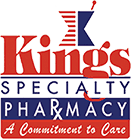Performing regular breast self-exams can make all the difference in women’s health.
That’s why adult women are often advised to perform a breast self-exam at least once a month.
October is National Breast Cancer Awareness Month. Here’s what you need to know about detecting breast cancer.
The first step you can take is to know how your breasts normally look and feel. These tests may not be perfect, but breast cancer self-exams can help women stay on top of their health by watching for any changes and bringing them to a doctor’s attention.
However, performing a breast self-exam does not take the place of regular mammograms and other screening tests. Because mammography can detect tumors before they can be felt, screening is very important for early detection. And early breast cancer detection has been linked to higher chances of survival. Speak to your doctor about how often you should be screened for breast cancer.
Breast Cancer Signs and Symptoms
The most common symptom of breast cancer is a new lump or mass. A painless, hard mass that has irregular edges is more likely to be cancer. However, breast cancers can be tender, soft or rounded. In some cases, the mass may be painful. Regardless of the specifics of the mass, report any new breast mass, lump, or change to your health care provider to have it evaluated further.
Other possible symptoms of breast cancer include the following:
- Swelling of all or part of a breast, even if no distinct lump can be felt
- Skin dimpling that may be similar in appearance to an orange peel
- Breast or nipple pain
- Nipple retraction (nipples that turn inward)
- Redness or thickening of the nipple or breast skin
- Nipple discharge (other than breast milk)
How to Conduct a Breast Self-Exam
Step 1: Stand in front of a mirror with your shoulders straight and your hands placed firmly on your hips. According to BreastCancer.org, you should check your breasts for changes. Bring any changes — like dimpling or bulging of the skin, nipple changes, redness, rash, swelling and soreness — to your doctor’s attention.
Step 2: Bring your hands together straight above your head. In this position, check your breasts for changes. Also look for any fluid discharge from the nipples.
Step 3: Lie down and put a pillow beneath your right shoulder and your right arm behind your head, the National Breast Cancer Foundation recommends. With the first few fingers of your left hand, make small, circular motions around your right breast and armpit, feeling for lumps. Make sure to use a firm and smooth touch. Keep your fingers flat and together. Repeat for the left breast.
Step 4: Perform another exam while standing in the shower. Check for any lumps or other changes by pressing your breasts and armpits with the pads of your fingers. Cover the entire breast, using the same technique listed in step 3. If you notice any changes, tell your doctor as soon as you can, but don’t panic. According to the National Breast Cancer Foundation, around 8 out of 10 lumps on the breasts are actually not cancerous.
When Is the Best Time to Perform a Breast Self-Exam?
According to Johns Hopkins Medicine, women should perform a breast self-exam around the same time every month. The timing becomes important because breast tissue is affected by the normal hormonal fluctuations in women’s bodies. Performing a self-exam at the same time each month can help women differentiate between a normal change and something that feels different.
For example, women who have not gone through menopause are recommended to perform their breast self-exam toward the end of their menstrual period. The end of the menstrual cycle is the time when the breasts are the least tender and the changes in hormones are less likely to affect the breast tissue. Women who have gone through menopause are recommended to select a day of the month and consistently perform their self-exam on that particular day.








